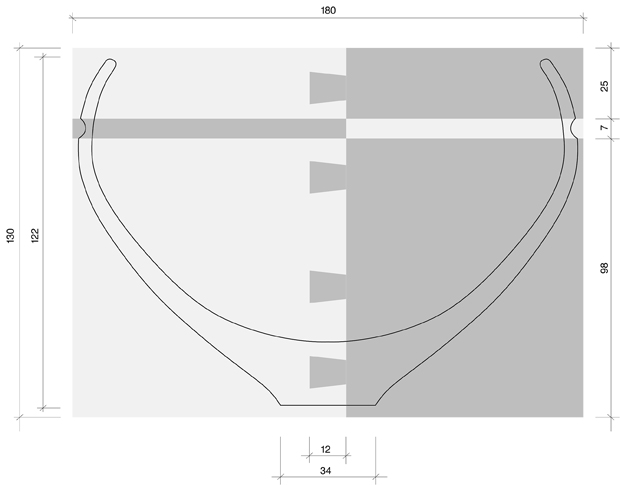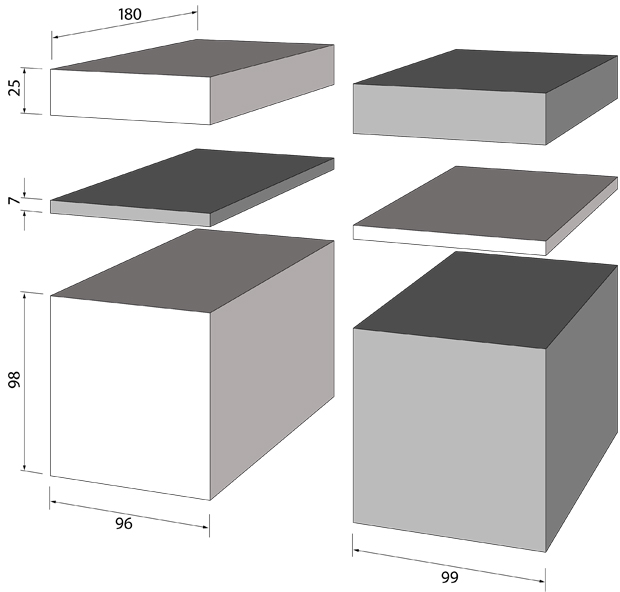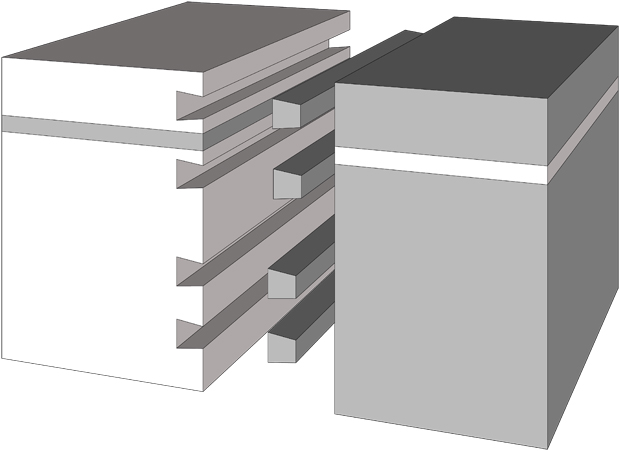A project by Arthur Grant.
Drawings by Graham Sands.
Arthur Grant was the winner of Wood Review’s So You Think You Can Dovetail competition (June 2013). Here is how he described the making of his winning piece.
Some time ago I designed this piece as a 2D symbol to encompass both woodturning and craftsmanship in wood. As time went by, the idea
became part of the logo of the Colac Woodturners and Woodcrafters Guild, of which I am a life member.
Further down the track I thought: why not give the idea its full 3D form by combining locally grown woods indigenous to the Otway Forest? The combination of blackwood (Acacia melanoxylon) and satin box (Phebalium squameum) came naturally together to create the negative and positive image, but I’m sure other combinations could work just as well.
The bowl is not what you may first perceive to be a bit of tricky sliding dovetailed joinery to make the 130 x 180 x 180mm turning blank. In fact ten pieces are glued together to make a solid block to turn the bowl from. It is important though to make an accurate set-out of what the final shape will be and the exact position of the dovetails (fig.1).

From this I made cardboard profiles for both inside and out that allowed me to check the turning as it progressed, but more importantly it gave me an accurate guide when marking out the dovetail positions. I selected a block of dark blackwood with growth rings running as near as possible to vertical on the finished bowl to camouflage the glue line where the tails meet the solid piece next to where they were cut from.
To make the contrasting line near the top I made two stacks of three pieces each and glued them together (fig. 2).

When dry I bandsawed off a 13mm slice from the blackwood blank, parts of which became the inserted tails (fig. 3).

After marking out the pins on the satin box part by using the set-out as my positioning guide, I grooved out most of the waste on my saw before using my router fitted with a dovetailing bit to finish the four cuts. It was now time to
take a lot of care.
I marked out the four tails on the 13mm slice by carefully referencing it against the dovetailed grooves in the satin box. I numbered each part on the endgrain before bandsawing away the waste (fig. 4).

I then carefully hand planed each of these tail pieces to fit before gluing them into place. After the glue had set
I flushed off the surface of both major parts and checked they fitted before gluing them together while ensuring the top and bottom surfaces were flush to form the blank (fig. 5).

I made sure the blank was completely dry before mounting it in my lathe just as I would do with
a solid turning blank. To give the piece balance I centred the bowl on the centreline through the dovetails.
I proceeded to turn the bowl while checking the shape from my previously prepared templates. I took care not to turn the bowl too deep; if I had cut into the bottom dovetail it wouldn’t have looked pretty, just a mess that would have detracted from the neat row of dovetails on the inside.

Arthur Grant is a retiree who started life as a joiner before re-training to become a trade instructor and secondary school teacher in the old Victorian technical school system. This story first appeared in Australian Wood Review issue 80, Sept 2013.









